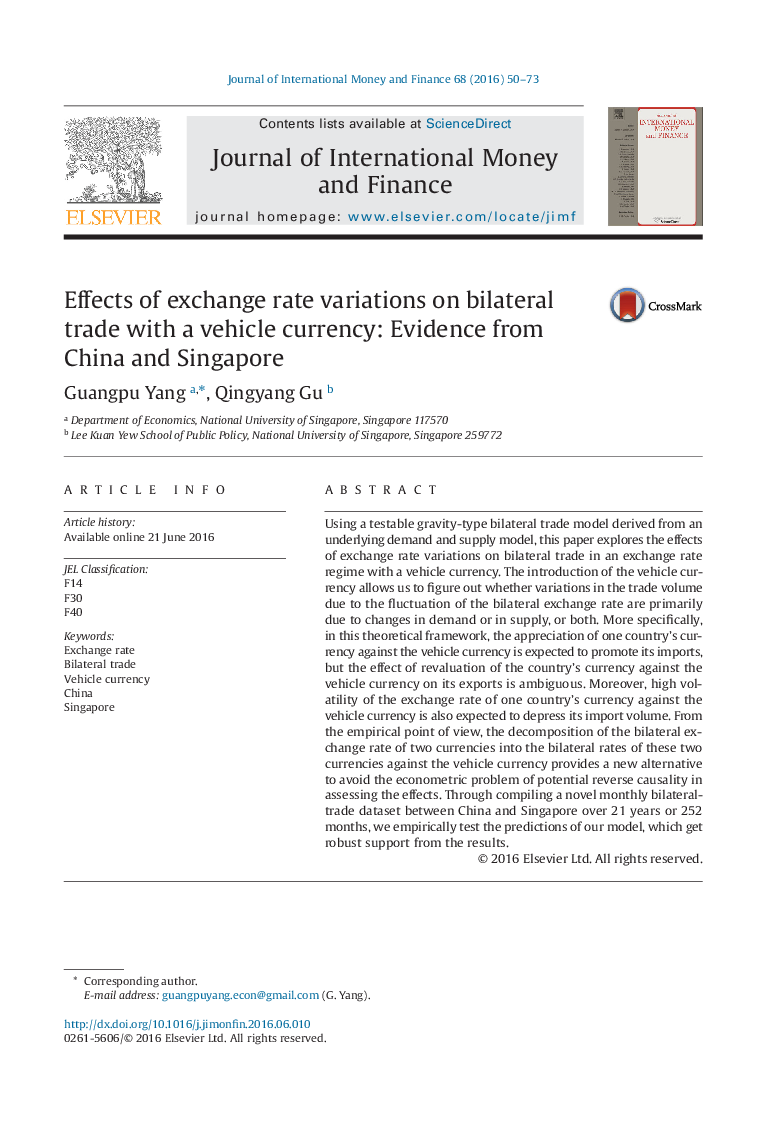| Article ID | Journal | Published Year | Pages | File Type |
|---|---|---|---|---|
| 964510 | Journal of International Money and Finance | 2016 | 24 Pages |
•A testable gravity-type bilateral trade model with a vehicle currency is derived.•Appreciation of a country's currency to the vehicle currency promotes its imports.•Volatility in the exchange rate of a currency against the vehicle currency matters.•Evidence from the Sino–Singapore bilateral trade is supportive of the predictions.
Using a testable gravity-type bilateral trade model derived from an underlying demand and supply model, this paper explores the effects of exchange rate variations on bilateral trade in an exchange rate regime with a vehicle currency. The introduction of the vehicle currency allows us to figure out whether variations in the trade volume due to the fluctuation of the bilateral exchange rate are primarily due to changes in demand or in supply, or both. More specifically, in this theoretical framework, the appreciation of one country's currency against the vehicle currency is expected to promote its imports, but the effect of revaluation of the country's currency against the vehicle currency on its exports is ambiguous. Moreover, high volatility of the exchange rate of one country's currency against the vehicle currency is also expected to depress its import volume. From the empirical point of view, the decomposition of the bilateral exchange rate of two currencies into the bilateral rates of these two currencies against the vehicle currency provides a new alternative to avoid the econometric problem of potential reverse causality in assessing the effects. Through compiling a novel monthly bilateral-trade dataset between China and Singapore over 21 years or 252 months, we empirically test the predictions of our model, which get robust support from the results.
